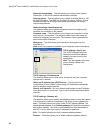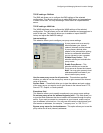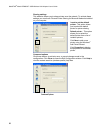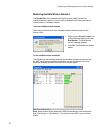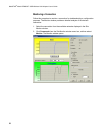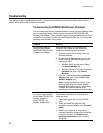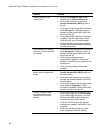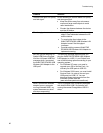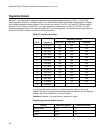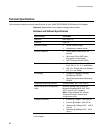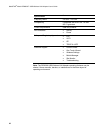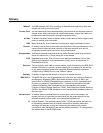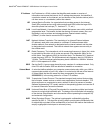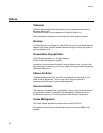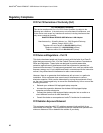WebSTAR
®
Model DPW939™ USB Wireless LAN Adapter User’s Guide
46
IP Address An IP address is a 32-bit number that identifies each sender or receiver of
information sent across the Internet. An IP address has two parts: the identifier of
a particular network on the Internet, and an identifier of the particular device (which
can be a server or a workstation) within that network.
ISP Internet Service Provider. An organization that provides access to the Internet.
Small ISPs provide service using cable modems and ISDN, while the larger ISPs
also offer private line hookups (T1, fractional T1, T3, etc.).
LAN Local Area Network. A communications network that serves users within a defined
geographical area. The benefits include the sharing of Internet access, files, and
equipment, such as printers and storage devices. Special network cabling
(10BaseT) is often used to connect the PCs together.
NAT Network Address Translation. The translation of an Internet Protocol address
(IP address) used within one network to a different IP address known within
another network. One network is designated as the internal network and the other
is designated as the external. The internal network then appears as one entity to
the outside world.
RF Radio Frequency. The international unit for measuring frequency is Hertz (Hz), which
is equivalent to the older unit of cycles per second. One megahertz (MHz) is one
million Hertz. One gigahertz (GHz) is one billion Hertz. The standard U.S. electrical
power frequency is 60 Hz. The AM broadcast radio frequency band is 0.55 MHz to
1.6 MHz. The FM broadcast radio frequency band is 88 MHz to 108 MHz. Wireless
802.11 LANs operate at 2.4 GHz.
SSID Service Set ID. A group name shared by every member of a wireless network. Only
client PCs with the same SSID are allowed to establish a connection.
Subnet Mask A value that defines whether your computer communicates only within your LAN or
communicates outside of your LAN, where it is routed out to the rest of the Internet.
A Subnet Mask that has the same first three components (for example,
255.255.255.0) is the routing pattern for a Class C IP address.
TCP Transmission Control Protocol. The standard transport level protocol that provides
the full duplex, stream service on which many applications’ protocols depend. TCP
allows a process on one device to send a stream of data to a process on another.
Software implementing TCP usually resides in the operating system and uses the IP
to transmit information across the network.
USB Universal Serial Bus. A Plug and Play standard for connecting multiple input/output
devices to a single high-bandwidth port. The design of the bus allows hot-swapping
of the devices (disconnection and reconnection without powering the computer off)
and automatic configuration.
WEP Wired Equivalent Privacy. The optional cryptographic confidentiality algorithm
specified by 802.11. The algorithm is being used to provide data confidentiality that
is subjectively equivalent to the confidentiality of a wired LAN medium that does not
employ cryptographic techniques to enhance privacy.



